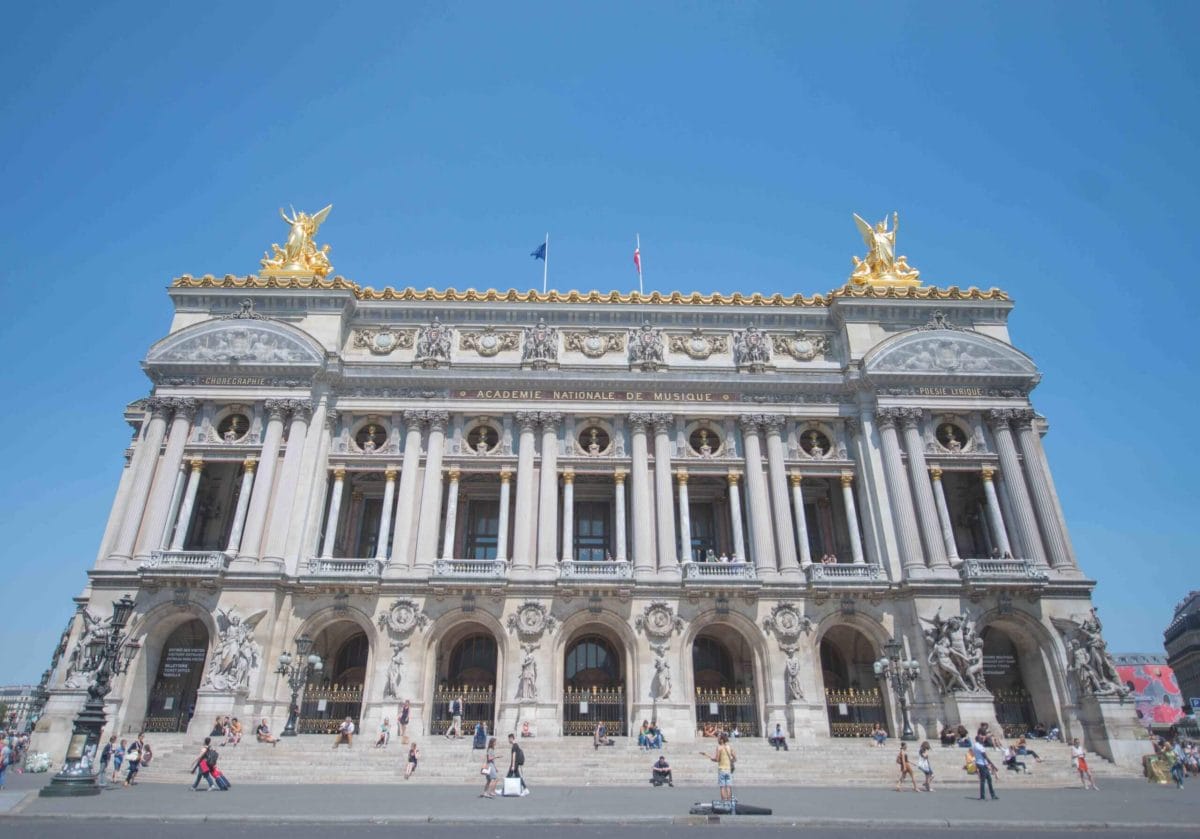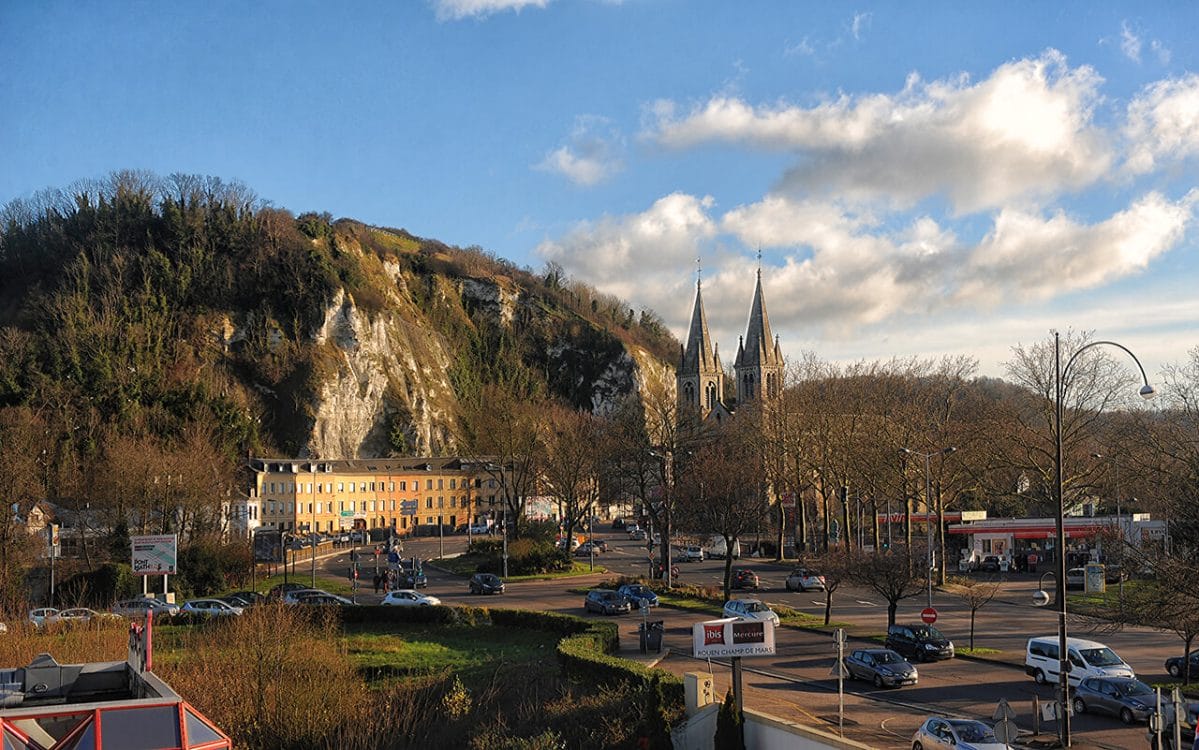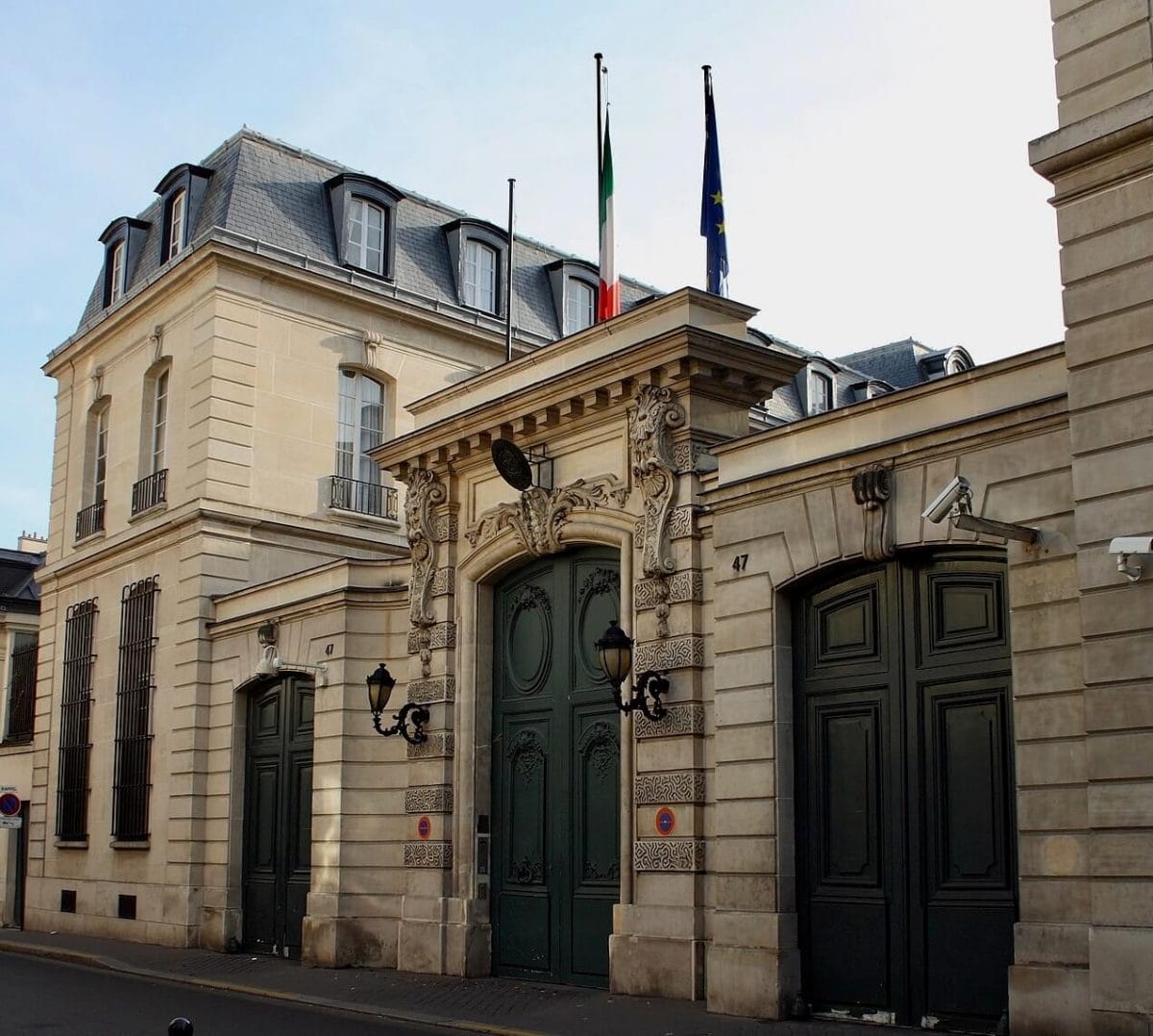Article
Places in the novels of Arsène Lupin

“He’s the greatest thief, yes, but he’s a gentleman.”
Jacques Dutronc
Arsène Lupin is the most famous burglar in French literature. Born under the pen of Maurice Leblanc, he lived many adventures leading him from Paris to Étretat. Follow in the footsteps of this crime novel character through 10 emblematic places in the saga.
Arsène Lupin, the art of disguise
If the credits of the television series interpreted by Jacques Dutronc has remained in all memories, Arsène Lupin is above all a novel character. Born in July 1905 in the pages of the magazine Je sais tout under the pen of Maurice Leblanc, the gentleman burglar was featured in 18 novels, 39 short stories and five plays. The immediate success and the plebiscite of the readers encouraged its creator to write many stories until his death in 1941.
Detective, soldier, policeman or burglar, Arsène Lupin is a top sportsman and a great fighter. But above all, he remained famous for his art of disguise, allowing him multiple packages. The intrigues of the stories of this popular character take place during the Belle Epoque and take him from Paris to Étretat, a place that became mythical thanks to him.
1. L’Aiguille creuse (1909)
L’Aiguille of Etretat

“What is even sadder is that, all that I have to give up. Is it beautiful? The immense sea… the sky… on the right and on the left the cliffs of Etretat, with their three doors, the upstream door, the downstream door, the Manneporte… so many triumphal arches for the master… And the master was me. King of the Hollow Needle ! Strange and supernatural kingdom!”
This is the most important place in the saga. It’s Arsène Lupin’s lair. In the Aiguille d’Etretat, would be the treasure of the kings of France. Pearls, diamonds, sapphires and other rubies of the sovereigns are stored in front of the Downstream Gate. The burglar would have gotten wind of this well-kept secret for centuries.
If today the places are still surveyed by lupinophiles – lovers of the character – the Needle is not at all hollow as the title of the book indicates. And of course, contrary to the novel, you can’t get in through hole number 10 of the Etretat golf course, the secret entrance to the den. In reality, scuba divers tried to find access. To no avail. Born in Rouen in 1864, Maurice Leblanc loved the place and its surroundings more than anything else in the world. By bicycle, on foot or on board his Panhard, he travelled through his beloved country of Caux. It was therefore logical that he brought Arsène Lupin there.
Address : 76790 Étretat
Arsène Lupin’s apartment

“From eight o’clock, twelve removal cars are crowding the rue Crevaux, between the avenue du Bois de Boulogne and the avenue Bugeaud. Mr. Félix Davey left the apartment he occupied on the fourth floor of no. 8 […] Félix Davey made a first round […] and inscribed, as one does on a commemorative plaque: “Here lived, for five years, at the beginning of the 20th century, Arsène Lupin, gentleman burglar.”
This building was not chosen by chance by Maurice Leblanc. The novelist lived on the fifth floor of this building between 1906 and 1911. Today it houses the Honduran Embassy in France.
Address: 8 rue Crevaux, 75016 Paris
2. The Countess of Cagliostro (1924)
Abbey of Jumièges

“As he approached Jumièges, he noticed a falot swinging in front of him and heard the sour sound of a bell (…) It was the priest of Jumièges who, accompanied by a child, had just returned from administering extreme unction. Raoul went with him, asked about an inn, and, during the conversation, giving himself up as an archaeology enthusiast, spoke of a strange stone that had been indicated to him. “The Queen’s dolmen… something like that…” I was told. It’s impossible that you don’t know about this curiosity, Father?”
The novel, written in 1924, looks back on the first moments of Arsène Lupin’s life. The gentleman is then in love with Clarisse d’Étigues but is also very disturbed by Joséphine de la Pagerie, Countess of Cagliostro. Born in 1788, she would have been 106 years old when Lupin saved her from an assassination. Yet her features are surprising: she appears to be 30 years old.
The setting of the plot takes place in Jumièges and more particularly in this abbey composed of an abbey church, the church of Saint-Pierre, a chapter house, a large western storeroom, cellars, underground passages, staircases and a vegetable garden. Founded in 654 by Saint Philibert, only the load-bearing walls of this Romanesque church remain. Very graphic, roofless and open to the four winds, it was classified as a historical monument in 1921.
Maurice Leblanc did not choose this place by chance. His uncle, Charles Brohy, was the owner of the town’s present post office, located opposite the abbey church. Between 1893 and 1894, the novelist wrote a series of Essential tales under the pseudonym of L’abbé de Jumièges during his various stays.
Address : 24 Rue Guillaume le Conquérant, 76480 Jumièges
3. The woman with two smiles (1933)
The castle of Tancarville

“Here are the facts: Mr and Mrs de Jouvelle and the guests they were entertaining in their castle at Volnic in Auvergne – a vast manor house with turrets, covered with red tiles – had attended a concert in Vichy by the admirable singer Elisabeth Hornain.”
Arsene Lupin is on a flight path. He is very interested in the heritage of the Erlemont family’s grandfather, who has not been found so far. He has to hurry if he wants the loot back because the clan of the deceased put an intelligence agency on the case.
For the fictitious Château de Volnic, Maurice Leblanc was inspired by the Château de Tancarville. This medieval fortress was built in the 11th century and was enlarged with the construction of a new part in 1709. Today transformed into luxury apartments, it is inseparable from the Leblanc family. Maurice’s sister Jehanne rented it with her partner Fernand Prat between 1910 and 1939.
The novelist wrote there Le bouchon de cristal dans sa tour de l’Aigle dating from the 15th century. He was also inspired by it for other castles present in the Lupinian canon: Mortepierre in The Teeth of the Tiger or that of the Hague d’Etigues in The Countess of Cagliostro.
Address : 76430 Tancarville
4. The mysterious house (1929)
Garnier Opera

“The idea, charming, had received the best welcome in this generous Paris, which willingly combines its pleasures with charitable events. The idea was to present on the stage of the Opera, between two ballets, twenty pretty women, artists or socialites, dressed by the greatest couturiers.”
Opera singer Régine Aubry is kidnapped. We then steal his corselet of diamonds. Then she’s released. Baron d’Enneris, alias Arsène Lupin, then decides to investigate the case.
The novel was pre-published in the daily newspaper Le Journal in the form of 37 serials between June 25 and July 31, 1928. Its paper version was published the following year by Pierre Lafitte. The national theatre inaugurated in 1875, the Opera Garnier has a hall that can accommodate 1979 spectators. The architect Charles Garnier proposed a very eclectic building, inspired by several artistic currents with, in the first place, Baroque art.
Address : Place de l’opéra, 75009 Paris
5. The Mysterious Traveler (1907)
Côte Sainte-Catherine Tunnel

“Was he going to throw himself on the track? At that speed, it would have been certain death. We rushed into the tunnel under the St. Catherine’s Hill… The man opened the door and, with his foot, felt the first step. What madness!”
Guillaume Berlet, alias Arsène Lupin is on board the Paris-Rouen train. Pierre Onfrey, a mysterious traveller, gags him and steals his papers and money. The police are convinced that the thief is Arsène Lupin. The gentleman burglar manages to untie himself in the rib of this tunnel.
With a length of 1056 m, this structure is also called the Bonsecours tunnel. Its entrance is located in this commune and its exit in that of Rouen. Today used on the Sotteville-lès-Rouen and Mont Gargan line, it was the scene of two major accidents. The first, on July 28, 1955, plugging its gallery, the tunnel was not reopened until the following year. The second took place on 20 August 1969 when a train derailed. The courage of the mechanic was important to avoid a disaster. There were only thirteen injured.
Address : 76240 Bonsecours
6. Arsène Lupin, gentleman burglar (1907)
37 rue de Berri, in Paris
“This card bore: Georges Andermatt, 37 rue de Berri.”
The police were called after a body was found. Two officers then lifted the body and discovered a crumpled business card in the left hand of the deceased with this address on it.
Arsène Lupin‘s first adventures were as a gentleman burglar. Composed of nine short stories, all the stories in this collection were pre-published in the newspaper Je sais tout. With a length of 548 m and a width of 12 m, the rue de Berri was created around 1778 and only took this name in 1852. At number 16 of the artery stands the Hotel California, while number 35 houses the Hotel des Champs-Elysées Plaza.
Address : 37 rue de Berri, 75008 Paris
7. The last love of Arsène Lupin (1936)
The Italian Embassy

“In December 1921, a grand ball was held at the Italian Embassy. A few small receptions had already marked the resumption of life in Paris, but this official evening was the first to take place since the events of 1914-1918.”
The ambassador and the ambassador are hosting a party at their home. The couple welcomes all the guests at the foot of the grand staircase. Then comes Miss de Lerne, simply dressed and without any jewellery.
Presumably written in 1936, this story was only discovered much later by Florence Boespflug-Leblanc, the writer’s granddaughter. She found it by chance: “on top of a closet, in a beige shirt with rusty hooks” in 2011. It was then published the following year by Balland. According to essayist Jacques Derouard, Maurice Leblanc worked on the manuscript shortly before his stroke. He would then have corrected it the following year, in 1937, “with a very shaky hand”.
Address : 51 Rue de Varenne, 75007 Paris
Herlock Sholmès arrives too late (1907)
“The joke was met with general laughter. There was there, in the large dining room of the castle of Thibermesnil, besides Velmont: Father Gélis, the village priest, and a dozen officers whose regiments were maneuvering in the vicinity and who had responded to the invitation of banker Georges Devanne and his mother.”
Horace Velmont would look like Arsène Lupin according to Georges Devanne. Rather offended by the remark, the man performed a pirouette that made the whole assembly laugh. It should be noted that the burglar was seen in the vicinity of the castle shortly before.
This building no longer exists today. But postcards and photographs attest to its presence for a few centuries. It seems that the castle was already in ruins in the time of Maurice Leblanc.
Address : Château de Thibermesnil, 76760 Yerville
The Island of 30 Coffins (1919)
“Finally, one morning, having wandered among the groups of half-submerged rocks that intersect the beach, and on the low cliff covered with trees and coppice that surrounds it, she discovered, between two bare oaks, a shelter of earth and branches that must have been used by customs officers. A small menhir stood at the entrance. On this menhir was the inscription, followed by the number 17. No arrows. Underneath, a simple dot. That’s all…”
In 1902, Véronique d’Hergemont investigates the death of her father and son. Arsène Lupin appears in this novel when the case is already well advanced by the young woman.
The plot takes place mainly on the island of Sarek. Although fictitious, it would be located off the Glénan Archipelago. Maurice Leblanc would have been inspired by Sark’s in Guernsey. Indeed, in English, this island is called Sark. Belonging to the British Crown, it measures 5.5 km2 and is home to 550 inhabitants. During his exile, Victor Hugo wrote several poems there.
Address: Sark Island, Guernsey
The lady with green eyes (1927)
Boulevard Haussmann, Paris VIII and IX

“Rue Auber, two kids fighting, she grabbed them by the collar and sent them rolling ten paces. Then she threw two gold coins at them… Boulevard Haussmann, she entered a pastry shop and Raoul saw from afar that she was sitting at a table. The gentleman who followed her did not go in, he entered and sat down so that she could not notice him. She ordered herself tea and four toasts, which she devoured with beautiful teeth.”
In Paris, Arsène Lupin decides to follow a man following an English tourist. The latter is then in a pastry shop on Boulevard Haussmann.
If Maurice Leblanc does not give the exact address of this pastry shop, he makes the young woman taste twice four toasts and tea. She is also forcefully questioned by a man in front of the shop. Crossing the 8th and 9th districts of the capital, this 2,530-metre-long artery is home to numerous bank headquarters and department stores. Marcel Proust moved to n°102 when his parents died. He wrote there, among other things, in search of lost time.
The places in the canon lupin are numerous, divided between Paris and the country of Caux. We can also locate the Port Lupin, a fictitious place inspired by La Neuvillette in the Aisne. Today, it houses bed and breakfast rooms.
The Fantrippers Buying Board

MIAMI map of 100 cult places (French Edition)
The Miami Fantrippers map, an original way to discover the Gateway to the Americas! Through 100 places of pop culture, walk its streets from another angle. Movies, TV shows, music, comics and novels, will allow you to spend a pleasant moment in this sunny and fascinating city. With a folded format of 10 x 18 cm and 60 x 54 cm unfolded, it slips easily into your pocket or your bag to be consulted easily.
Content quality
Interest for fans
Value for money

By Damien Canteau
Passionné par l'Histoire, les animés, les Arts et la bande dessinée en particulier, Damien est le rédacteur en chef du site spécialisé dans le 9e art, Comixtrip.



